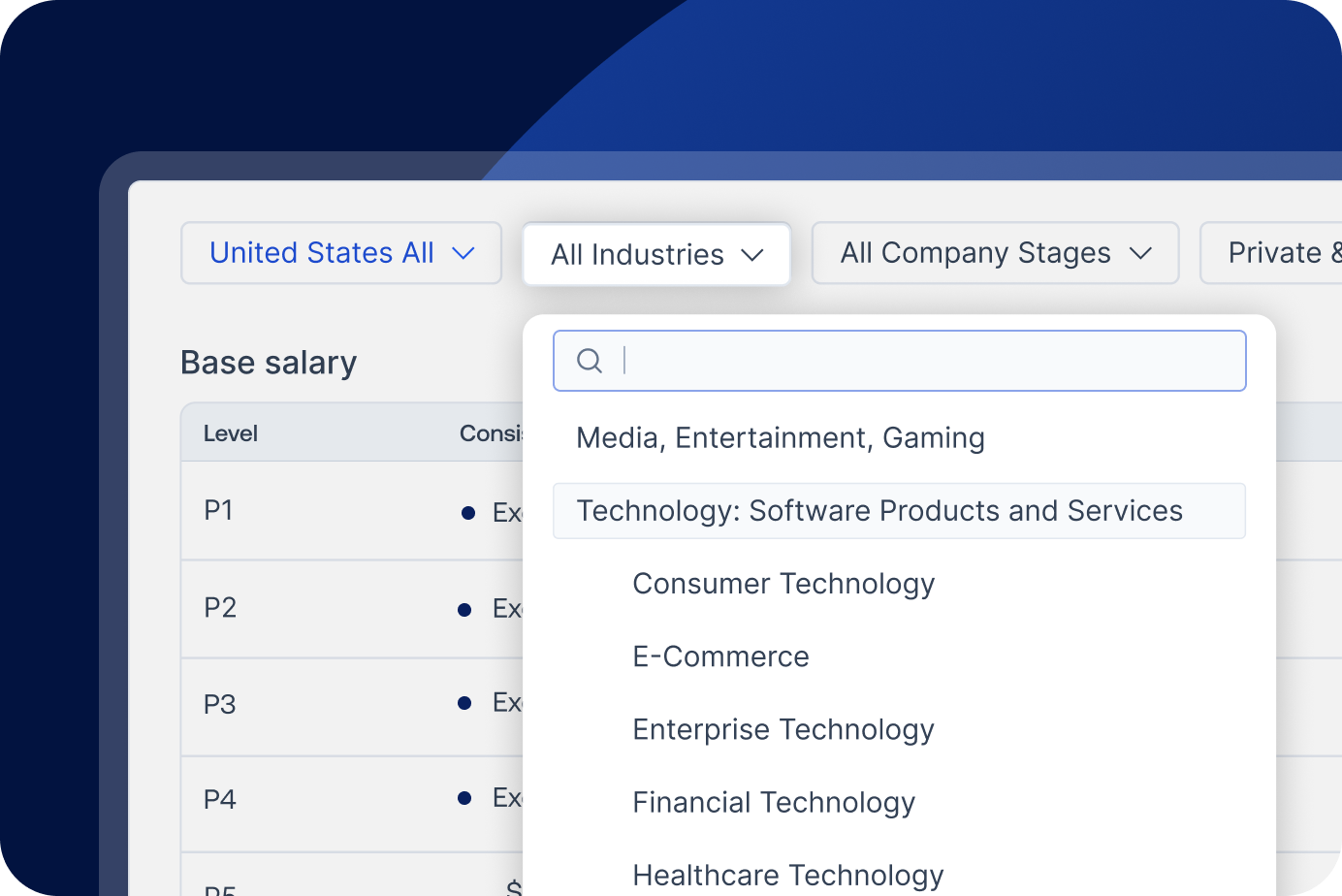As states continue to pass pay transparency laws – we’re at 17 states and counting – it's imperative that People leaders everywhere take pay transparency seriously. It’s no longer an issue that teams can “tackle at some point.” It’s time to take action now.
The challenge that many People Leaders face isn’t around their willingness to share this information with employees and candidates. It’s the fact that they have a significant amount of preparation and operational work to do before they can make compensation information available to employees and candidates. Specifically, they need to create compensation bands for each role, updated to align with industry rates, or put in a format that allows them to share that information securely.
Today, we’re excited to share that Pave is launching a new product – Compensation Bands – that delivers the foundation you need to build fair and transparent compensation practices at your company.
Better yet, once that foundation is built, you’ll be able to more easily comply with the regulations coming online.
The New Pay Transparency Requirements
As mentioned, already 17 states in the U.S. have passed laws around pay transparency. The most basic of these laws gives employees protection to freely discuss their pay with other colleagues without fear of retaliation from their employer.
Some states, however, are taking more aggressive measures. In May 2022, New York City started requiring employers to post salary ranges for every job, from new openings to internal promotions and transfers. Similar actions have been mandated in Colorado and Washington state. Most recently, California has passed legislation mandating that all companies with 15 or more employees must start disclosing compensation bands by January 1, 2023, both for current employees and for job postings.
It may seem like a lot to prepare for, but this is a great thing for employers and employees alike. Pay transparency laws will blaze a clear path towards pay fairness and equality. Employees can ensure that they’re being paid fairly and employers have the opportunity to build trust with employees and candidates.
The Path to More Transparent Compensation
One of the cornerstones that makes pay transparency possible is having well-defined compensation bands for all roles, levels, locations, and more, depending on the size and maturity of your company.
Not only are they what you’ll use to operationalize your comp philosophy (e.g., pay percentiles, location-based pay) but they also lay the foundation for pay equity and transparency. With compensation bands in place, you can:
- Help employees understand how their compensation reflects their skill and career progression
- Make offers to candidates that are in-line with market data, your comp philosophy, and what current employees in that role are making
- Run fair and equitable merit cycles that are rooted in data
In addition to centrally storing your bands, you’ll also need a way to easily and securely share them with the right members of your management and recruiting teams, and your employees. Excel sheets, while effective at storing data, are not equipped for this new use case that People Leaders find themselves faced with.
It requires a new way to store, edit, visualize, and share your compensation bands altogether.
Introducing Pave Compensation Bands
With Compensation Bands, companies can adopt a new approach to compensation band management. You can say goodbye to outdated spreadsheets and say hello to a modern solution that’s custom built for your needs.
Build a Single and Centralized View of Bands
Compensation Bands makes it possible to create one unified and trusted view of your pay bands.
You’ll be able to easily view or compare your compensation bands and quickly drill down to certain functions, levels, and more with intuitive sorting and filtering.

Edit Bands Seamlessly
In addition to storing bands in the platform, you’ll also be able to edit your bands once they’re in Pave.
As we all know, the market moves quickly. It’s imperative that you’re able to update bands to make sure that you’re retaining talent and able to hire new folks.
What’s great about editing bands in a central place is that once you’ve reviewed those edits and decide they’re ready to roll out, those updates will be automatically synced to the places you and your team uses bands, and in other parts of the Pave product.
That means – no more out-of-date spreadsheets, no more endless back and forths on Slack – just one up-to-date and trusted set of comp bands.

Get insights about employee distribution
Once your compensation bands are in Pave, you’ll be able to access band insights to ensure that every employee is in-band and, most importantly, paid fairly.
With band insights, you’ll be able to view where your employees fall within a band, get insights about their pay – such as compa ratio and range penetration – and easily find employees who are out of band.

Configure Granular Access Based on Your Needs
Of course, we wouldn’t build a compensation band product without thinking about permissions.
As important as it is to ensure that the right people have access to certain comp bands, you also want to be able to prevent others from accidentally sharing or accessing another set of compensation bands.
Based on your company’s needs, you’ll have the power to configure granular permissions for compensation bands in Pave.
For example, you can:
- Set bands admins for people that can view and update all bands
- Set specific groups (e.g. recruiters) to see certain bands
- Enable managers to be able to see their team’s bands
- Set access based on attributes of bands (e.g. level)

Share Bands With Employees
Last but not least, you can use Compensation Bands to bring a new level of pay transparency to candidates and employees. Because the product centrally stores your bands, it becomes simple to display those bands to employees or candidates through the product directly, in job postings, or in an employee's Total Rewards portal.
In case you’re unfamiliar, Total Rewards in Pave gives candidates and employees a complete look at their compensation packages, from salary to equity to benefits.

How to Get Started
If you’re currently using Pave’s full-suite, you’ll have access to the new product shortly at no additional cost.
If you’re new to Pave, you can learn more about the new product by requesting a demo or signing up for one of our upcoming webinars here.
Pave is a world-class team committed to unlocking a labor market built on trust. Our mission is to build confidence in every compensation decision.








